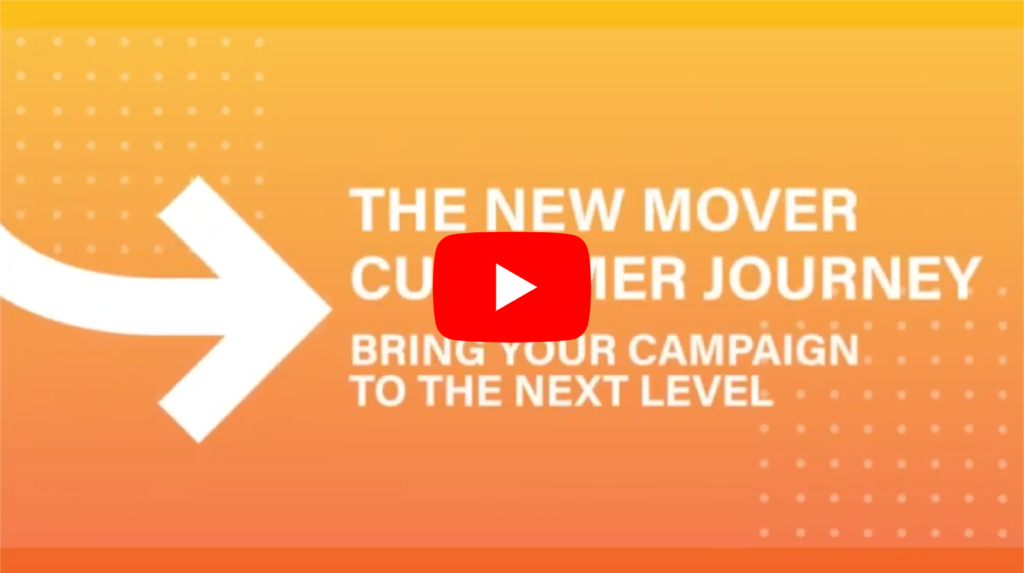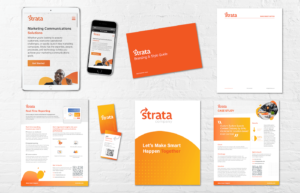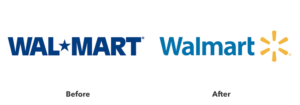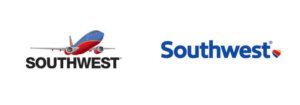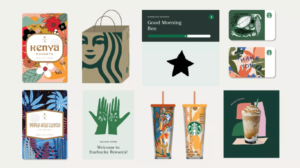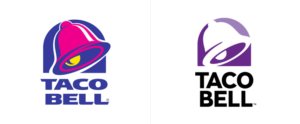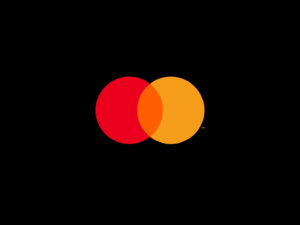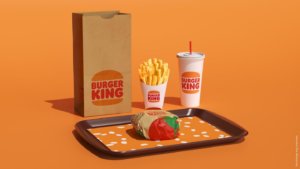With a Combination of Direct & Digital Marketing (and the Right Partner)
Maybe you’ve heard about the paper shortage, or maybe you’ve experienced it first-hand. Either way, it’s something you should know about, as it’s seemingly becoming a bigger issue in our field day by day. But, before we sound all doom and gloom, we do have good news. Although it’s a current issue we’re facing, there are ways to combat it and work around it. In this blog, we’ll walk you through what exactly is causing the shortage, what it means for us (and you), and how we all can continue business as (almost) usual.
What’s Happening with the Paper Shortage?
So, what’s really going on? Well, there are many shortages going on right now – primarily due to all of the craziness that’s ensued over the past few years. The pandemic has been the primary factor in most shortages, from toilet paper to manufacturing products, and everything in between. Something else that’s suffering? Lumber, and in turn – you guessed it – paper.
Back in 2020, the demand for paper dropped by “up to 75% in some segments” due to drops in education and office space usage. Because of this, “paper mills reduced or curtailed production…which caused inventory to drop to levels which have not been seen previously.”
More recently, there’s been a “convergence of Canadian lumber tariffs, increase in demand for home remodeling and building of homes brought on by the pandemic, and hiccups in supply related to transportation.” From home projects to home purchases, we’re now using a lot of wood. More wood demand has called for changes in processes for these previously idle lumber suppliers, which has slowed production – and even worse, transporters impacted by Covid-19 risks has made for fewer available drivers to carry out shipments from mills and shipping ports.
Generally, one thing has led to another, causing a domino effect that’s triggered lumber prices to skyrocket, and has disrupted several industries.
What Does This Mean for Marketers & Print Projects
Yes, the paper shortage is concerning, but it doesn’t make print and direct mail marketing impossible or any less effective. With that said, don’t go overboard. Be aware of the materials you’re using and try to keep a close eye on the balance of supply and demand. While the lack of resources is a hurdle, the shortages are actually giving printers and marketers an opportunity to get creative with project execution by combining print with digital and trying new outreach possibilities.
How Can We Combat the Shortage?
There are several ways to work around the current hurdles we’re facing. The first? Using more digital technology wherever possible (and effective) – like QR codes, for example – to cut back on the paper needed to communicate a message or tell a story. Not only can QR codes and PURLs, or other tools help you use less paper, but they can help you more effectively track, monitor, and enhance your campaign. You can also try supplementing your multiple direct mail touches with other tools like digital ads and emails. A multichannel approach is always more impactful than a single channel, anyway.
Next, look into making your mailers, flyers, and other print marketing materials more cost effective by using a smaller paper weight, or stand out in the mail with a smaller but more uniquely shaped piece.
Lastly, look to work with a company with paper buying power and ample experience. They’ll be aware of the current issues, and will understand what’s best for your company’s marketing needs.
Reach Out
When it comes to shortages of any kind, remember to be patient and plan ahead. The paper shortage most likely won’t be around forever, but the more flexible you can be, the more you can mitigate the issue. After reading this, we hope you’re feeling a bit more knowledgeable of the current shortage as well as what you can do to combat it. If you’re interested in learning more about how Strata’s working through the shortage with our client (and on our personal projects), or are looking to work with us on your next multichannel marketing campaign, feel free to reach out.
All Your Questions Answered
There’s a lot of buzz around new mover marketing and the best ways to target potential new customers. And with all the attention and noise around it, the topic can get confusing and leave a lot of essential questions unanswered. Today, we’re going to answer all your questions about new mover marketing – and give you some insight into how to start a successful and smart new mover campaign.
Why should I target new movers in the first place?
Easy answer. With over 13% of Americans moving ever year, a ton of new movers are not only new to your area, but are looking for your business. They’re in a stage where they’re starting to develop what will become habitual shopping/buying habits and not looking for a reason to spend, but where to spend. Recent surveys show that 80% of new movers are willing to try new products since they’re in a new market and searching for new businesses and services. Also, how else are you going to replace those long-term, current clients that are moving out of your market area?
In what industries is new mover marketing effective?
Movers moving into a new house spend on average, $9,400 post-move, and that’s split into several different industries depending on the individual. When people move to new areas, they have several new (and already existing) needs that can only be met by several different industries. This means a new grocer, new healthcare provider, new dentist, new restaurants, a new gym… list goes on and on (and on).
Is it possible to segment who I target?
Yes, you can segment who you’re targeting based off age, demographic, and even by household income, to identify your ideal customer profile. The level of available segmentation depends on your new mover marketing partner and the technology that’s provided, but it can (and has been) done.
Can I have more than one touch point across several channels?
Absolutely! We recommend implementing multiple touch points that come from different angles. This means reaching your customers through several different channels, such as digital, direct mail, and email. All of these channels of communication, used together and correctly, are proven to show effective ROI.
How can I grow my new mover market through direct mail?
With around 61% of customers finding direct mail influential in making purchasing decisions, it’s important to make it one of the cornerstones of your new mover marketing campaigns. Direct mail can be personalized for the consumer, be authentic to your brand, and provides opportunity to be creative with how you market products and services to your consumers. Mailers that typically work best for new movers are dimensional mail, postcards, and bi-folds with incentive items.
How can I grow my new mover customer base with digital ads?
Hand in hand with direct mail, digital ads are excellent in getting your company’s name across your potential customer’s device. Creating display and banner advertisements is an effective way to send customers to your website or to a specific landing page. The power of digital marketing often speaks for itself, so it’s important to have elements of it involved in your new mover marketing campaign to reach all potential customers – not just some.
What kinds of responses should I expect throughout my campaign?
This all depends on the structure of your campaign and what kind of responses you’re aiming for. For instance, if you include a business reply card (BRC) within your direct mailer, your response rate will be based off how many potential customers fill them out and return them. Furthermore, the more aggressive your offer is for a direct response, the greater the response will be. Responses typically vary between industry and how many different touch points are built into your campaign. Response rates can also be determined by digital ads based off the number of consumers that interact with your landing page by clicks or submitted forms.
What’s the best way to track responses from my campaign?
When executing a new mover marketing campaign, make sure the program you’re using can easily track all progress, responses, and data that comes with the campaign. Find a partner with access to technology that allows you to see real time responses for your campaign and gain intelligence from those responses to make adjustments as it’s executed.
How do I effectively set up a new mover marketing campaign?
Picking the right partner is everything when it comes to successfully setting up a new mover marketing campaign. The right partner will provide the right data, the right technology, and a partnership with strong content creators who will represent your brand correctly. Work with a company that understands your markets and has several years of experience.
Looking for ways to incorporate a new mover marketing strategy into your next campaign? Here at Strata, we have years and years (and years) of experience under our belts. We’re here to assist you with all your new mover marketing questions and needs. Contact us today.
Bring Your Campaign to the Next Level
With over 40 million people moving every year, there’s a huge market for new customers moving into your target area. That said, many businesses have no idea where to start when it comes to targeting and reaching these new movers. Today, we’ll give you an overview of what new mover marketing is, the customer journey that a new mover takes, and the best channels and campaigns to reach them. Let’s dive in!
From Movers to Buyers
One of the most important things to realize about new movers is that they’re currently nobody’s loyal customer (yet). They’re a key group to target because they’re open to new businesses and products, and on average, develop 72 or more new business relationships within one year of moving. They’re also 5 times more loyal than your regular customer due to being new to the area. Once they find something they like, they’re willing to frequently buy it with ease. Making up 17% of the U.S. population, you can’t afford to miss these walking (and unpacking) opportunities. So, how are their (frequently loyal) buying habits formed? New movers are heavily influenced by timing. Whether you contact them before or after their move decides how they feel about your communication, and what they’ll do about it…
Pre-Move Buying Habits
Data shows that movers begin to stock up on home items right before they move. Products such as kitchen utensils, light fixtures, and everyday household tools are high on their list during this pre-move time.
Post-Move Buying Habits
After their move, new home buyers are likely to spend an average of $9,400, while renters spend around $4,700. Still, this number varies with age, area and demographic. Most of these buying decisions are made within the first few months of moving, which makes it the best time for your company to make contact, introduce yourself, and showcase your product.
A new mover’s first purchases will depend on their personal needs and priorities. For instance, a mover with medical needs may find a doctor immediately, while a mover with a large family may first find a new grocery store. Either way, they’ll have to find both eventually – and it’s likely they will within the first few months. Thankfully, new movers don’t need to be convinced to buy (they’re already more than ready), you’ll just need to convince them to make the right buy (from your company).
Staying in Touch
It’s not only important to get in touch with these potential loyal customers, but to stay in touch. After making a strong first impression, you’ll want to make more points of contact to ensure your company stays top of mind. It’s essential you have a good combination of marketing across several channels that are strategically picked and placed.
New Mover Marketing Tactics
There are several ways to reach these new movers, first, but since we’re experts – we’ll tell you the best ones. First is direct mail. Direct mail ideally arrives at the same time or a few days after new movers enter your neighborhood. Delivering direct mail that welcomes and attracts the new mover while introducing your business is a great way to begin an ongoing relationship. And the stats back this up – as 40% of consumers try new businesses after receiving direct mail. Direct mail is perfect as a first touch to new movers, as it’s personalized, meets them in their new home, and catches them at the right time.
A great way to ensure this direct mail delivers ROI is through BRCs (business reply cards) or eBRCs with incentives. A BRC is a vehicle that allows a prospective customer to provide information to send back to your business, and if incentivized, can return high response rates and bring you valuable customer data.
What’s the next best channel for reaching new movers? Digital advertising. Hand in hand with direct mail, digital ads can create brand awareness, link to your chosen landing page, and target specific online audiences. Digital advertisement placement and audience targeting are the top optimization tactics used by advertisers today.
Email is next – and combined with both direct mail and digital ads, email can be that final touch that brings your company new customers. Using either the BRC information or engagement with digital ads, emails are easy to obtain, making it almost effortless to add new customers to your automated or personalized promotional email campaigns.
The Visible Influence
New mover marketing allows marketers to influence movers’ buying decisions from the beginning of their move all the way until they walk into your doors. It’s about building immediate and vital relationships – because once a new mover buys from you and your shop, they’re 90% more likely to become a repeat customer.
If you want to dig even deeper, it’s smart to use a program that gives your business insight into your customers – such as live statistics and touchpoint behaviors. These meaningful insights will allow your shop to make enhancements on the fly and improve your campaigns, ultimately increasing ROI.
If you successfully target new movers, create convenient touchpoints that meet their needs, and maintain conversation as they have questions and reach out, the new mover will not only finish their journey as a customer, but as a loyal, repeat one. Looking for ways to incorporate a new mover marketing strategy into your next campaign? With years and years (and years) of experience under our belts, we’re new mover marketing experts. Contact us today.
With the Top 10 (Other) Best Rebrands & Refreshes
We can’t believe we’re already celebrating the one-year anniversary of Strata’s brand refresh. It’s been quite a year (to say the least). But we can honestly say that, with all of the struggles of 2020-2021, our brand refresh wasn’t one of them. If it did anything (and it did a lot), it definitely brought us together, made us more confident, and better showcased our personality, vision, team, and solutions. The brand refresh catapulted Strata into 2020, helping us solidify our style and services, attract new talent, and stay inspired.
When we decided we needed a new look – we had to pick between a full rebrand or a refresh. For us, the answer was easy. A complete rebrand would have required scrapping our identity and starting from scratch, where a refresh allowed us to keep our main identity and strategy intact. Our brand was strong with our current clients and we had a great reputation as problem solvers and solutions experts – so a refresh was perfect for what we needed to do.
With any rebrand or brand refresh – “consistency across all channels is key”. Over the past year, we’ve ensured that all our materials – from website to print, are on-brand.
Since we now have a bit of rebrand and refresh experience under our belts, we wanted to take a look at the top 10 best company rebrands and refreshes (in our eyes) besides Strata’s, of course.
Our Top 10
Dropbox
Dropbox refreshed its brand in 2017, and it was nothing short of successful. The company worked with design studio “Collins” to create a cleaner and simpler logo and lots of illustrative elements to better connect with their primarily creative and collaborative audience.
Airbnb
Airbnb did a full rebrand in 2014 with Design Studio, sending their team of designers to 13 cities to truly immerse themselves in Airbnb’s offerings, community, and mission. It resulted in a beautiful brand that differentiated Airbnb from its similar competitors. The CEO of Airbnb even stated, “When I look at this brand, I suddenly realized everything I’ve been trying to say, now we have a way to express it.”
Walmart
“There are very few companies in the world that managed to change the public perception of their brand as successfully as Walmart did.” In 2008, Walmart made this change to get away from their “always low prices” slogan that often-made customers feel like it was also “always low quality”. They also wanted to steer clear of the questionable corporate practices they were called out for in the early 2000s. So, Walmart did a complete 360 with a whole new brand from redesigned stores to a new look and personality.
Southwest
We love this brand refresh because it reminds us of ours. Without a complete overhaul, Southwest changed its look and logo to showcase their humanity and heart – literally.
Guinness
Good old Guinness. Many love it, others don’t, but it always holds true that Guinness makes us feel like we’re back in the olden days, sipping a brew in the pub. Instead of following the crowd of flat logo designs, Guinness actually added detail to its logo in 2016, working “with real harp makers to breathe new life into the legendary logo” that “could be built into an actual harp that would work properly and be in tune.”
Starbucks
Starbucks is loved by many – and dare we say it – is mainly successful because of its brand (although we do love it a latte). They’ve made slight changes over time to the brand, always increasing their user experience and recognizability with a “distinctive color scheme, typography, and illustrations.”
Taco Bell
You may not have really noticed Taco Bell’s brand refresh until now – but its cleaner, simpler look has helped it stay relevant among its many fast food and taco chain competitors. Along with this well-done refresh, Taco Bell has been named “one of the healthiest fast-food chains in America,” so, they’re doing quite well.
Mastercard
In 2016, Mastercard conducted a refresh with Pentagram to emphasize “simplicity, connectivity and seamlessness.” It’s simple and sleek look of just the famous two overlapping circles is surprising, but logic-based. “The change follows research by Mastercard that found that more than three quarters of people asked were able to identify the brand from the two interlocking circles alone.
Burger King
For the first time in 20 years, Burger King conducted a brand refresh with a new logo, uniforms, and packaging – and we love its nostalgic look. The new logo is actually very close to BK’s logo design from the 70s-90s. The creative agency on the project wanted to “pay homage to the brand’s heritage with a refined design that’s confident, simple and fun.”
Intel
Last but not least, Intel’s 2020 refresh caught our eye because of its subtle hints to past logos. Again, it refers back to their past while being currently relevant. “This new logo includes elements of both (past logos), but in a much more subtle, minimalist way.”
To take a more in-depth look back at our brand refresh, visit our original refresh blog, here. If you’re looking to make your branding and marketing communications more effective and efficient, give Strata a call.
Get to Know These Tracking Treats
Within the world of marketing, there’s a lot of buzz around the topic of cookies and what the future holds for tracking website visitors and generating personalized advertisements. While the topic’s relevant, not many people are completely informed on what cookies are and the impact they have on our ability to create better customer experiences. In this blog, we’re going over what cookies are, the differences between first-party and third-party cookies, and the future of online tracking.
So, What Are “Cookies”?
Although many of us are “foodies” here at Strata, and could talk about a good dessert all day, this blog isn’t about Oreo or Chips Ahoy. We’re talking about web “cookies” – text files put into a user’s browser page while they’re visiting a website. Cookies are known by several names – web cookie, internet cookie, browser cookie, or HTTP cookie, but they’re all the same, and in general, they track and log browsing activity against identification data such as IP addresses. Why is this information useful? Primarily, cookies help save information about a user in order to personalize their website experience and the advertisements they’re shown.
While cookies have enjoyed a childhood free of regulation, their “free-willy” time is coming to an end with recent regulatory initiatives driven by an increase in public concern over internet privacy. The first major change came when General Data Protection Regulation (GDPR) made consent mandatory in order to track visitors on a website. To give you a feel for the impact of GDPR – about 11% of users click to “accept all cookies”, 76% of users ignore the banner completely, 12% close the cookie banner, and 0.5% of users actually open up cookie settings, read through terms and agreements, and sometimes make adjustments. These numbers are misleading, however – what GDPR essentially did was force the user to choose between viewing the desired content and accepting cookies OR (with exceptions) leaving the site entirely. So, while it looked good – almost all of the visitors in the stats above were still being tracked.
At this point, you might be thinking that we need to eradicate the cookie – if so, hold that thought. Cookies almost always make your experience on the web better – they’re your friend, not your enemy. To solve privacy concerns – which is the intent of all privacy-centric regulation – we’ll need to jump down a level. There are two major types of cookies – First-Party and Third-Party. Both contain the same pieces of data and technically can conduct the same actions, but they’re created differently, used differently, and have different benefits for distinctive situations. Let’s get into each one.
First-Party Cookies
Simply put, first party cookie technology is usually installed or authorized by a website’s owner and only tracks that user across that specific website. First-party cookies are set on the publisher’s server or on the JavaScript loaded to the website. Their defining technical feature is that, for the most part, only the domain that created the cookie can access it, thus they are seen as less invasive and are more welcomed by users.
These cookies allow website owners to collect analytical data, remember individual user settings or content (remembering what’s in a user’s shopping cart, their language preferences, or their username and password), and perform useful functions to provide better user experience. That last part is important – first-party cookies primary purpose is to deliver more relevant, user-friendly experiences to individuals. If you’d like to see the difference they make, just clear your browser cache and visit some of your favorite websites.
Third-Party Cookies
Contrasting first-party cookies, third-party cookies are not created by the domain of the website the user’s currently visiting, and therefore, can often seem intrusive and un-welcomed. This type of cookie is placed by another site, such as an advertiser or social media platform like ad.doubleclick.net – and is separate from the home domain. These cookies are usually used for online advertising purposes, and are added through a script, code, or tag to track a user across several websites. Enabling these cookies can help users see relevant discounts and catered advertisements, but can also possibly involve them in a breach of privacy. For this reason, third-party cookies are blocked by many browsers, and are currently being chastised as unethical.
Phase Out of Third-Party Cookies
In February of 2020, Google announced its phase out of third-party cookies by 2022. When this occurs, it will cause 56% of web browsers (the percentage that use Google Chrome) to block their use automatically. As stated by Google, their reasoning for forcing this phase out is to increase security and protect the user. You have to wonder, however – are ethics the driving principle here, or is this a strategic move to further corner the digital advertising market?
All-in-all, this change won’t make as much of a difference as you’d think, as a 2017 study showed that 64% of tracking cookies were already being blocked as users surfed the web. Those at Google seem to think that third-party cookies will not be replaced by another resource due to increasing privacy concerns, but they’ll continue to “support first-party relationships on our ad platforms for partners, in which they have direct connections with their own customers.”
What’s Next for Cookies?
No matter what the circumstances with third-party cookies, first-party cookies are definitely here to stay. If configured correctly, they’ll continue to function within most browsers – even if those browsers block third-party cookies. So – fear not – first-party cookies will provide marketers hindsight and insight on your website visitors for the foreseeable future – even if you might now be forced to use Google to reach them.
Now that you know a bit more about cookies, you may be motivated to improve and optimize your next digital marketing campaign. If so, contact us today.


